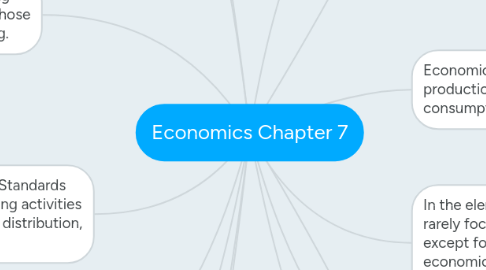Economics Chapter 7
by Lauren Murph

1. Preschoolers typically do not understand economic institutions, and they do not understand the value of money or how it is used.
1.1. I remember when my cousin was younger he had a difficult time understanding money. He though we could get money anywhere and buy anything.
2. Children 8-10 know some sources of money that owners can use to pay their employees.
3. The National Council of Economics Education developed a set of voluntary national standards for teaching economics as a discipline.
3.1. Some of these standards deal with macroeconomics and are better suited for instruction in high school.
4. The NCEE's standards and lessons can be found on the website.
5. Economics standards appear in the NCSS curriculum standards.
6. the NCSS curriculum Standards include some interesting activities related to production, distribution, and consumption.
6.1. One activity is having two teams to make gingerbread cookies
7. Economics educators often recommend using children's literature as a resource for teaching the concepts of economics.
8. The most powerful and lasting economic lessons are likely those involving experiential learning.
8.1. I did not learn very well when I was in economics class. If the class had been more experiential I am sure I would have learned more, rather than just listening to someone talk.
9. A successful program for teaching economics in grades 3-6 is Mini-Society.
9.1. I found this to be very creative. I loved reading about this and I would like to learn more.
10. As an overall reflection, I was never good at economics. In high school I dreaded going to class everyday. When I had it in college, I would also dread it. I never enjoyed it and I found it to be very boring and confusing. After reading this chapter, I am confident I can teach economics if I build my background knowledge.
11. Economics is the study of the production, distribution, and consumption of goods and services.
12. In the elementary grades, instruction rarely focuses directly on economics except for a few lessons on personal economics and very basic economic concepts.
13. Research has shown that young children tend to believe in a benevolent world in which people get whatever money they need from banks simply by asking for it and shopkeepers sell items for the same price at which they were bought.
14. Children also realize that entrepreneurs do not have to be honest to be profitable.
15. the text book discusses how most elementary school teachers do not have much formal economic knowledge, making it difficult to teach the material.
15.1. When I think about teaching economics, I do get a little apprehensive but I will focus on building my knowledge level of this discipline before I teach it.


